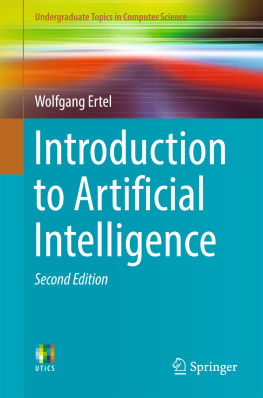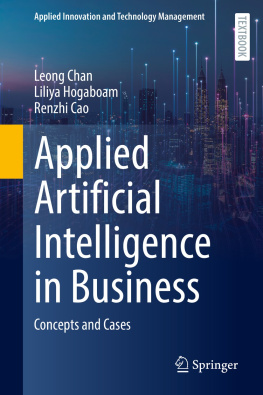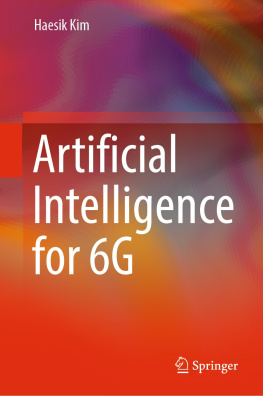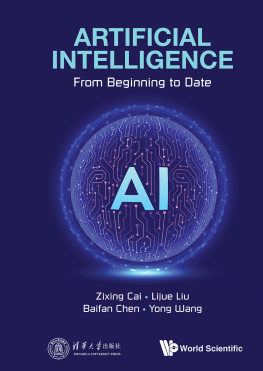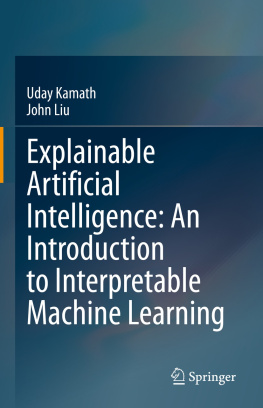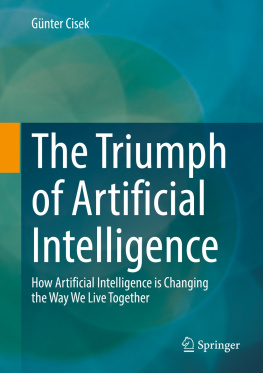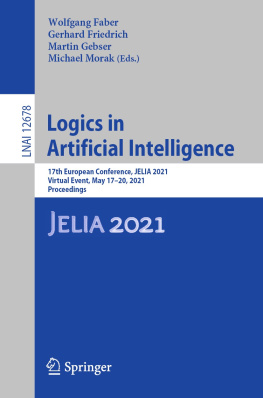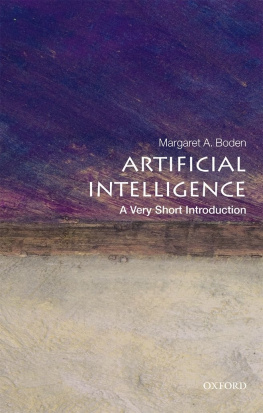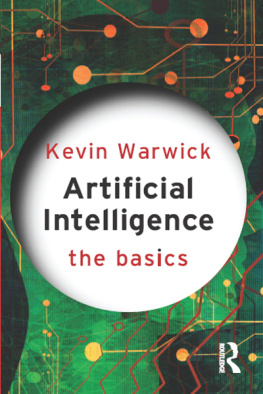Wolfgang Ertel - Introduction to Artificial Intelligence
Here you can read online Wolfgang Ertel - Introduction to Artificial Intelligence full text of the book (entire story) in english for free. Download pdf and epub, get meaning, cover and reviews about this ebook. year: 0, publisher: Springer International Publishing, genre: Children. Description of the work, (preface) as well as reviews are available. Best literature library LitArk.com created for fans of good reading and offers a wide selection of genres:
Romance novel
Science fiction
Adventure
Detective
Science
History
Home and family
Prose
Art
Politics
Computer
Non-fiction
Religion
Business
Children
Humor
Choose a favorite category and find really read worthwhile books. Enjoy immersion in the world of imagination, feel the emotions of the characters or learn something new for yourself, make an fascinating discovery.
- Book:Introduction to Artificial Intelligence
- Author:
- Publisher:Springer International Publishing
- Genre:
- Year:0
- Rating:5 / 5
- Favourites:Add to favourites
- Your mark:
- 100
- 1
- 2
- 3
- 4
- 5
Introduction to Artificial Intelligence: summary, description and annotation
We offer to read an annotation, description, summary or preface (depends on what the author of the book "Introduction to Artificial Intelligence" wrote himself). If you haven't found the necessary information about the book — write in the comments, we will try to find it.
Introduction to Artificial Intelligence — read online for free the complete book (whole text) full work
Below is the text of the book, divided by pages. System saving the place of the last page read, allows you to conveniently read the book "Introduction to Artificial Intelligence" online for free, without having to search again every time where you left off. Put a bookmark, and you can go to the page where you finished reading at any time.
Font size:
Interval:
Bookmark:
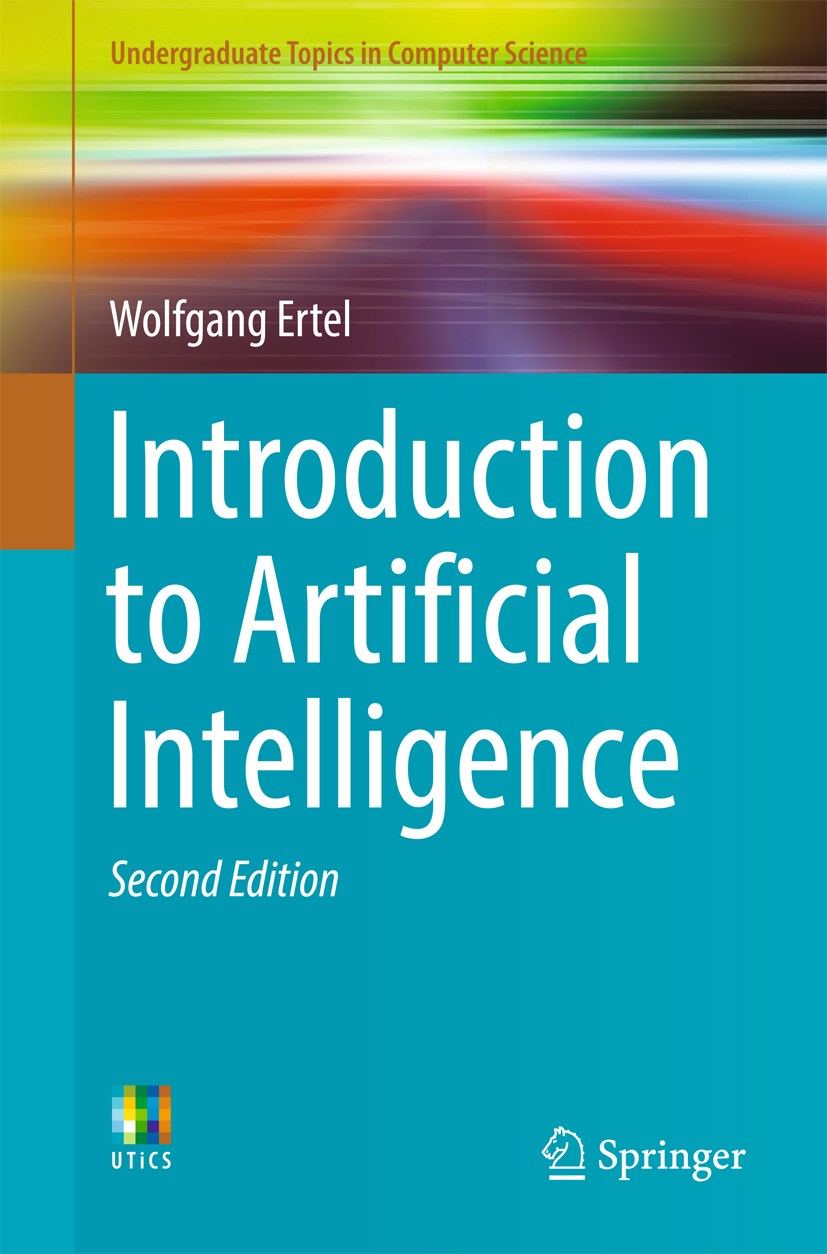
Series editor
Ian Mackie
Advisory Board
Samson Abramsky, University of Oxford, Oxford, UK
Karin Breitman, Pontifical Catholic University of Rio de Janeiro, Rio de Janeiro, Brazil
Chris Hankin, Imperial College London, London, UK
Dexter Kozen, Cornell University, Ithaca, USA
Andrew Pitts, University of Cambridge, Cambridge, UK
Hanne Riis Nielson, Technical University of Denmark, Kongens Lyngby, Denmark
Steven Skiena, Stony Brook University, Stony Brook, USA
Iain Stewart, University of Durham, Durham, UK
Undergraduate Topics in Computer Science (UTiCS) delivers high-quality instructional content for undergraduates studying in all areas of computing and information science. From core foundational and theoretical material to final-year topics and applications, UTiCS books take a fresh, concise, and modern approach and are ideal for self-study or for a one- or two-semester course. The texts are all authored by established experts in their fields, reviewed by an international advisory board, and contain numerous examples and problems. Many include fully worked solutions.
More information about this series at http://www.springer.com/series/7592

This Springer imprint is published by Springer Nature
The registered company is Springer International Publishing AG
The registered company address is: Gewerbestrasse 11, 6330 Cham, Switzerland
After 60 years, Artificial Intelligence (AI) has now reached industry and the consciousness of the population. The impressive successes and new AI methods are now so relevant that they should be taught even in a basic course. In about 30 new pages, I report mainly on deep learning , a consistent further development of neural networks, which finally enables image processing systems to recognize almost any object in pixel images. Among other benefits, this lead to the first computer program that could beat one of the worlds best Go players.
In the new section on Deep Learning, we must not leave out a short report about the fascinating new subarea of creativity . For the first time neural networks can creatively generate texts, music pieces, and even paintings in the style of the old masters. These achievements are based on many years of research on neural networks and machine learning. Practical AI has developed into an engineering discipline in which programs are developed in large industrial teams by experts from various specializations.
Self-driving cars, service robots, and smart homeswhich are all applications of AIwill greatly change our lives. However, in addition to great rays of hope, there will be a dark side. Though we live in a time of rapid technological progress, we have long since exceeded the limits of growth. We must therefore think about sustainability when implementing each new invention. In Chap. , I would like to give you some food for thought about this topic.
Other new additions to the book include a section on performance evaluation of clustering algorithms and two practical examples explaining Bayes theorem and its relevance in everyday life. Finally, in a section on search algorithms, we analyze the cycle check, explain route planning for car navigation systems, and briefly introduce Monte Carlo Tree Search.
All known errors have been corrected and updates have been made in many places.
I would like to sincerely thank the readers who have given me feedback and all those who contributed to this new edition through proofreading and suggestions. I would especially like to thank Adrian Batzill for the route planning measurements and graphs, as well as Nate Black, Nicole Dathe, Markus Schneider, Robin Lehmann, Ankita Agrawal, Wenzel Massag, Lars Berge, Jonas Lang, and Richard Cubek.
Artificial Intelligence (AI) has the definite goal of understanding intelligence and building intelligent systems. However, the methods and formalisms used on the way to this goal are not firmly set, which has resulted in AI consisting of a multitude of subdisciplines today. The difficulty in an introductory AI course lies in conveying as many branches as possible without losing too much depth and precision.
Russell and Norvigs book [RN10] is more or less the standard introduction into AI. However, since this book has 1,152 pages, and since it is too extensive and costly for most students, the requirements for writing this book were clear: it should be an accessible introduction to modern AI for self-study or as the foundation of a four-hour lecture, with at most 300 pages. The result is in front of you.
Font size:
Interval:
Bookmark:
Similar books «Introduction to Artificial Intelligence»
Look at similar books to Introduction to Artificial Intelligence. We have selected literature similar in name and meaning in the hope of providing readers with more options to find new, interesting, not yet read works.
Discussion, reviews of the book Introduction to Artificial Intelligence and just readers' own opinions. Leave your comments, write what you think about the work, its meaning or the main characters. Specify what exactly you liked and what you didn't like, and why you think so.

